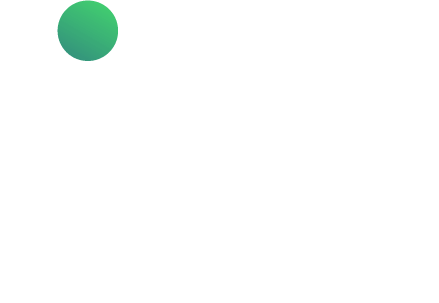The Future of Video Production
How Leading Video Pros Are Responding to Remote & Hybrid Workflows

Report Collaborators:
Combined with wider industry data, we set out to interview leaders in various industries, from sports broadcasting to publishing, to see how they’ve been dealing with the changes and challenges within the field of video production.
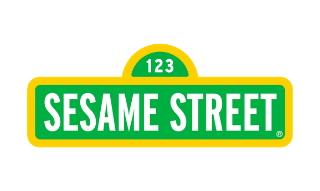
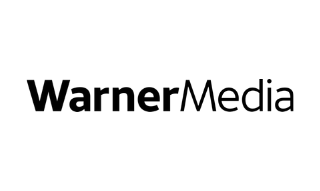


What will you learn
As working-from-home (WFH) and flexible working become the new norm, video production teams across countless industries have had to think on their feet, get creative, and adopt new approaches to triumph over ever-emerging obstacles.
As video production teams know all too well, file sizes and bitrates present staggering barriers to seamless collaboration and remote access. To meet current and future demands for video content in a WFH environment, teams must overcome these and other pressing issues like:
Slow internet speeds, further burdened by others in the household being online.
Limited access to media files and footage from outside networks.
Poorly organized and unsearchable video file archives.
Creative slumps resulting from not being able to meet in-person or work physically together — for instance, quickly showing someone else a scene or clip, or brainstorming ideas.
Security concerns and permission controls for files and media.
New normal, new challenges

Seth Tanner
Director of Content
Cincinnati Bengals

Mariana Camacho
Editor in Chief
Food & Wine en español

Memo Salazar
Editor
Sesame Street

Jacob Anderson
Manager, Asset Management
Warner Media Studios

Corey Jennings
Video Producer
University of Maryland Baltimore County

Eric Lund
Senior Manager, Post Technology
Warner Media Studios

Michelle Conroy
Production & Sales Manager
Crew Cuts

Barry Flanigan
Chief Product Office
COPA90

Kevin Maude
CEO
Social Video

Brian Leonard
Head of Engineering
IMG

James Ganiere
Executive Producer
Rio Vista Universal

Salvatore D’Alia
Original Content Director
Adorama

Sean Ross Sapp
Managing Editor
Fightful
It’s no surprise that video production is changing and changing fast. After all, we are living, working, and filming in unprecedented times. Social distancing has pushed industries of all kinds to rethink their workflows and reimagine the possibilities. This is especially the case for industries that rely on innovative video content to engage, inform, and entertain their audiences.
It’s been no easy feat to maintain production pipelines, contend with large file sizes, and facilitate seamless collaboration among remote-working teammates. As a software provider to some of the largest and best video production companies in the world, we have first-hand insights into the specific challenges video production teams face, as well as the cutting-edge solutions available to address these challenges.
What this report will deliver
In this report, we will provide comprehensive answers and creative solutions to these increasingly common problems. Thankfully, modern technology has helped streamline the WFH cultural shift and remedy many associated pain points. In particular, cloud-based solutions have empowered video teams in all areas to embrace remote workflows without serious disruption.
At its core, this report is about the role of media asset management (MAM) in changing video production workflows. After all, the right MAM tool can improve:
- How archive material is accessed
- How collaboration occurs
- The type of metadata that can be generated
- How teams review in-progress and completed material.
So, in looking at MAM tools, we will reveal how secure, cloud-based, multi-user collaboration is not only possible but actually relatively simple. However, we’re not satisfied with stopping there. We aim to take it all one step further — setting out a strategic vision for the very bright future of video production.
Ultimately, this report is about empowering you to understand the MAM landscape and make an informed purchasing decision. Although the pandemic has presented video production teams with endless hurdles to clear, the inspiring industry-leaders we spoke to have managed to embrace technology and transform each and every commonplace obstacle into an extraordinary opportunity. In these ‘unprecedented times’ and beyond, there’s no question that MAM will play a critical role in video production’s long-term future.
Ready to find out how?
Universal solutions to common challenges
WFH culture has accelerated the adoption of remote collaboration technology. More people than ever before are using and benefiting from collaborative tools like Slack, Zoom, and Teams. And in the video content world, IPV is at the forefront of this exciting shift — mainstreaming access to cloud-based, broadcast-grade media asset management (MAM) tools.
Most production departments already use some form of a video content management (VCM) system, but many of these systems simply don’t hold up to the current demands of remote-working. Fortunately, several more advanced options, known as MAMs, have become available over the last decade, all designed to meet both present and future demands. Although they’re arguably interchangeable terms, MAM is rapidly replacing VCM as the central and primary tool for enhancing video production workflows.
While we will highlight the benefits and uses of MAM throughout this report, it’s worth digging a little deeper now:
Defining media asset management
MAM (media asset management) plays a fundamental role in resolving the challenges of remote workflows. A MAM is any system used to store, organize, and access media resources — as we previously noted, MAM often shares a definition with DAM (digital asset management) or VCM (video content management).
However, MAM more accurately refers to software capable of deploying advanced management capabilities within its product and archive settings. This means that the right MAM tool should enable:
Direct integration with editing software, such as Adobe Premiere Pro
Multi-user access to single cloud-based files
Edit traceability and ‘undo’ functions
Permission-based access to a unified production and archive environment
Automated frame-accurate proxy creation and conform
Automated basic metadata creation
Advanced metadata creation using object detection and speech recognition
Essentially, the right MAM tool, like IPV’s Curator, flips the problem of file-sharing on its head, allowing for remote access to cloud-based files and eliminating the need to ‘share’ files at all. Users can simply edit video assets in the cloud through a permissions-based framework — and the very same permission settings can provide users access to search and edit archive material. Even better, automated proxy creation and conform eliminates the issue of slow download/upload speeds and ensures files are always up-to-date. With this feature, team members can edit smaller versions of the master file. Those ‘small’ edits are automatically applied to the high-res master file. Pretty cool, huh?
These features understandably make MAM an increasingly popular way of modernizing video production workflows. However, many teams are missing out on the vast opportunities afforded by this all-in-one solution. Even if we expand the definition of MAM to include older systems such as DAM or VCM, only 62%1 of teams report using MAMs in any capacity, and only 41% use a MAM to transfer their files. No matter how you slice it, there is a lot of untapped potential for teams to improve production workflows with MAM. It’s time to make a change.
Q: Does your team use a digital asset management system?
Q: Do you have a dedicated resource managing your DAM system?
A deeper look at media asset management
Now that we’ve given you an overview of what a MAM tool is, let’s take a more detailed look at some of its key features, benefits, and uses. Curious about what MAM can do to improve your video production team’s workflow, collaboration abilities, and output? Let’s find out!

Curator for Adobe
Gone are the days of disorganised folder systems and hours spent on admin. Check out this quick video demo to see how you can spend more time creating with Curator.
Industry breakdown: Sports broadcasting
Now that we’ve covered the bigger-picture issues and explained how MAM can improve broader outcomes, let’s zoom in to look at some industry-specific concerns, starting with the sports broadcasting industry.
It goes without saying that the pandemic has pushed sports broadcasting into a challenging position, with a significant number of national and international sports leagues and events suddenly canceled or suspended. A pause in playtime translated to broadcasters relying upon sports archives as a primary source of content to keep at-home fans engaged and entertained. The result? New challenges in organizing archives, accessing footage, and generating useful metadata.
In addition to a heavier reliance on archive material, the sports broadcasting industry is contending with the typical challenges and growing pains brought about by the WFH revolution. Slow internet speeds, inhibited collaboration, and disrupted workflows have all been obstacles to sports broadcasters during this time. However, as you’ll see, integrating the right technology can enhance work processes, helping sports broadcasters strategize to conquer OTT platforms and pave the way for a winning future.
Sports broadcasting: challenges and solutions
Here, we’ll dig deeper into some of the specific challenges and solutions facing sports broadcasters today:
Challenge: Organizing and accessing archive footage
Sports broadcasters have always drawn heavily upon archive footage — it’s helpful for reels, highlights, and more. Of course, the current circumstances have made archive footage all the more important, as teams repurpose it to make new, engaging content for fans. However, many sports broadcasters struggle to organize and provide their remote-working team with easy, speedy access to archive footage.
According to Barry Flanigan of COPA90, it’s vital now more than ever to have the right tools to utilize and deploy the archive more effectively. “And that will very definitely continue beyond this crisis. That's something that we've always planned to do with our cloud infrastructure.”
Solution: Using a cloud-based MAM that enables advanced meta-data creation at ingest
MAM is an essential tool for providing remote team-members access to archive footage and creating collaborative video production workflows in the cloud. Remember, for footage to be useful, it must be easy to search, locate, and access.
So what’s the solution? Simple: advanced recognition software, which improves asset ingest, metadata creation, and archive transparency. Upon ingest, the technology scans the clip and offers descriptive tags based upon the images and sounds — all the media manager needs to do is hit ‘approve.’
These capabilities mean that you can easily search for specific players, games, or branded products and logos. Advanced metadata capabilities pay dividends in analytics insights: searching for specific athletes can reveal who audiences are connecting with most, and searching for brands and logos can help deliver visibility statistics to sponsors.
Challenge: Creating new, innovative content without traditional shoots
While archive footage is invaluable in times like these, sports fans remain hungry for new content. Forward-thinking teams and brands must rise to meet this demand for their fans — or someone else will. With football matches canceled, Barry Flanigan’s team faced this very challenge. While they were able to repurpose archive content to great success, they've also had to think creatively about ways to produce content remotely without the luxury of being able to go on a shoot. So how did they do it?
Solution: Positioning the audience front and center
Flanigan’s team found success with their “Stay at Home, Play Together” partnership with EA. The campaign involved player ambassadors, who shot content remotely, and a FIFA tournament hosted by former player Rio Ferdinand.
Similarly, Sean Sapp’s team at Fightful found that Zoom and Skype interviews provided new opportunities to dig deep. “I got a lot more time with subjects when I get to interview them at their convenience, as opposed to in a convention or event setting.” Over at the Cincinnati Bengals, Seth Tanner found success by taking a fan-centered approach. A lack of original footage saw his team focusing on analytics to build a strategic approach to content production.
Tanner’s team leaned into their digital and social platforms, meeting fans looking for a distraction from current events. The team began producing fun hype videos based on the NFL draft and quarterback prospect Joe Burrow. This fun, fan-centered approach paid off — the team experienced noteworthy growth on all of their digital channels.

Where we were seeing the greatest results was just listening to our audience base and making sure that we were producing the content they actually wanted to consume.
- Seth Tanner, Cincinnati Bengals
Challenge: Facilitating a healthy workflow and creative collaboration
A significant number of sports broadcasters, like many others, have struggled with replicating their physical workflow in virtual settings. While the demands of this era have meant that many people have had to flex their adaptability, step up to the plate, and play in new positions, it’s essential, especially for creative teams, to reduce admin and keep team members focused on delivering the high-quality work they’re known for. Of course, that’s easier said than done.
Solution: Adopting digital tools that ease your administrative burden and free up team members to focus on what they do best
A MAM tool improves collaboration, whether you’re in the office or working from different locations. Any users with permission can access and edit proxies, making collaborating easy.
We know that version-control disasters can slow down workflows, which is simply not an option in the high-speed world of sports broadcasting — cloud-based editing ensures that your team will always be working from the most up-to-date file. In addition, traceability and undo functions make it easy for team members and other stakeholders to review work and quickly remedy any potentially costly mistakes. When it comes to facilitating a seamless workflow, MAM truly is a cutting-edge solution.
COPA90: Building a foundation in the cloud
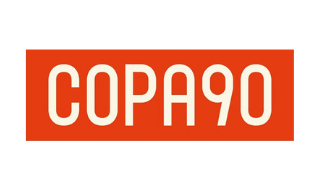
About: COPA90 is a football media business providing football related content to digital audiences including documentaries about football culture and interviews with players from the game.
HQ: London, United Kingdom
Number of Employees: 90
Industry: Sports broadcasting
“I think we made a smart decision early on to move to the cloud, which is now paying dividends at a time like this.” — Barry Flanigan, COPA90
Pre-lockdown, Barry Flanigan’s team at football fan-site COPA90 was creating 2,000 to 3,000 pieces of content per month, much of it video-centric. And when the pandemic hit, they had no intention of slowing down. While traditional sports media focuses on what’s happening in the game itself, COPA90 focuses on fan culture and the emotional connection with the game, meaning Flanigan’s team has been able to maintain its high level of output even without new matches being played.
One of the things that has been crucial to the team’s success is their cloud infrastructure. Ahead of the 2018 World Cup in Russia, the team decided to move the majority of their content workflows into the cloud. This made sense — most of COPA90’s ‘human interest’ sports content is evergreen, continuing to resonate even when it’s a few years old. However, until that point, the team had taken a fragmented approach to managing their video assets. Going forward, they wanted everything in one place. In particular, it was important to have a more robust way to access both archive material and newly created content.
When lockdown measures hit, this prep-work put the team in a prime position. Much of their footage was already in the cloud, tagged with metadata, enabling easy access. This made it effortless for the team to repackage archive content at a time when shooting fresh content wasn’t really possible.
Flanigan attributes his team’s success during this trying time to the foundation on which it was built: “Because we put the infrastructure in place, it led to us being able to cope much better with this current situation.”
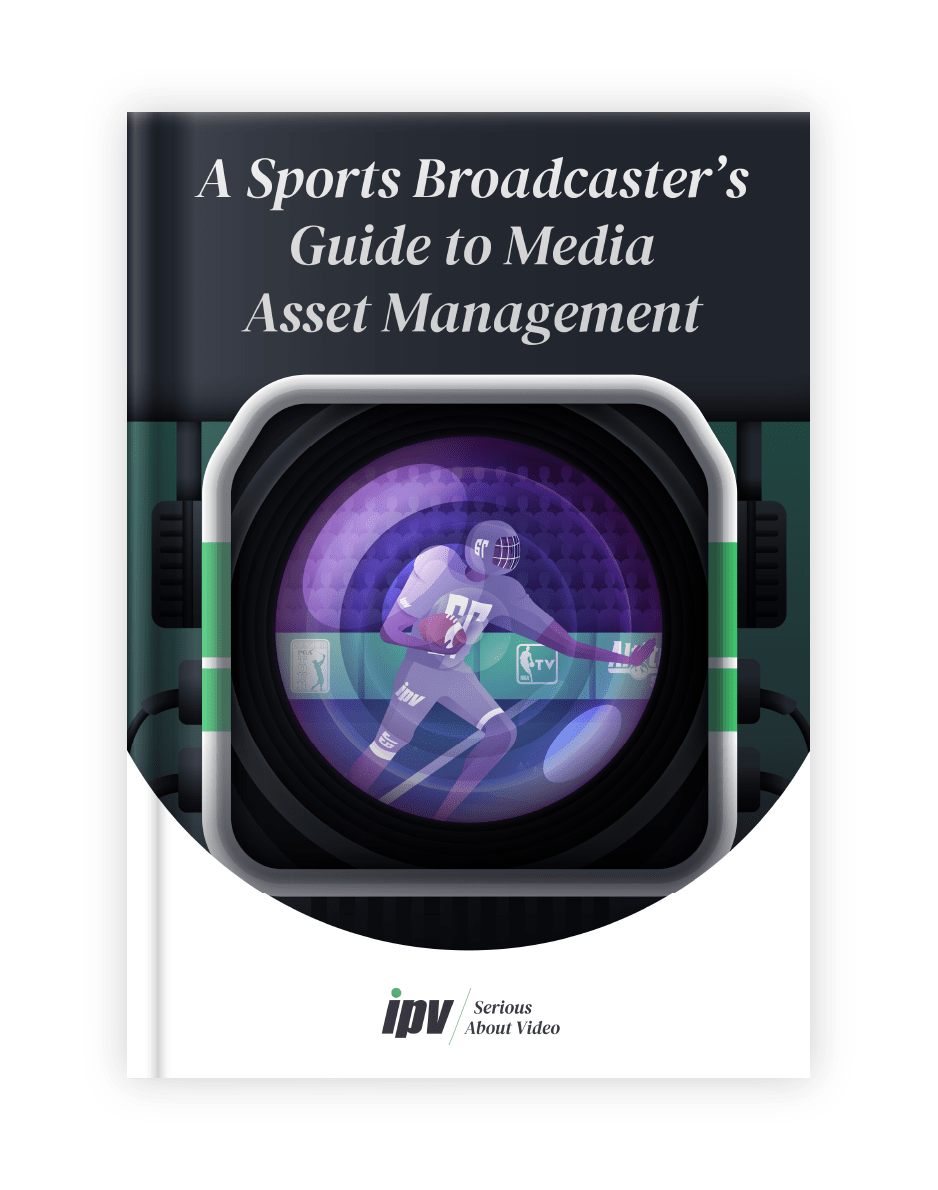
A Sports Broadcaster's Guide to Media Asset Management
Learn how to effectively access and re-use archive material to continue to deliver on-demand content for sports fans.
Industry breakdown: Higher education
Although this has been a time of change and upheaval for many industries, there’s no doubt that our current situation is demanding a lot from higher education institutions. Although video is only one component of the transformative shift to remote-learning, it is a critical tool to deploy. The current generation expects video content — after all, video currently accounts for more than 80%2 of all internet traffic. Educational institutions that deliver on this growing trend will likely see a significant return on their investment and set themselves up to deploy video more effectively across the board.
In addition to serving educational goals, video plays a vital role in prospective student recruitment and current student engagement. Video plays an even more critical role in staff recruitment, alumni programs, and internship opportunities.
Of course, for educators, making the right pedagogical choices is the most pertinent factor in any decision-making process. However, before institutions can even begin to consider learning outcomes, they must contend with a myriad of technical and workflow challenges to scale their video production and storage capabilities. For universities, the future is already here — and so there’s no better time to prepare than now.
Higher education: challenges and solutions
So, what are the specific challenges facing higher education in the field of video production? Here’s what we’ve found:
Challenge: Scaling and transforming video content management (VCM) systems to match the demands of video-based learning and outreach
In addition to growing video-based learning capabilities at rapid speed, many universities have understandably started shifting their marketing spend away from print pieces and towards video content.
Of course, this shift was already taking place in many institutions of higher learning, but social distancing has undoubtedly accelerated the transition. After all, video provides endless possibilities for educators and marketing teams. However, many universities simply don’t have the tech infrastructure to even meet current demands, much less facilitate future growth.

Because video is such a great storytelling medium, we’re constantly trying to figure out how we can use it to tell stories in new ways
- Corey Jennings, University of Maryland Baltimore County (UMBC)
Solution: Investing in a scalable MAM system
Simply put, a MAM system is an investment in the present and the future. As video continues to play a critical role on- and off-campus, future-proofing your institution and ensuring the system can grow along with your growing demands is of the utmost importance. Curator is suitable for users with as little as a couple of thousand video assets, and users who ingest thousands of media files per week. This leaves plenty of space for your video production department to spread its wings, with the assurance that the right infrastructure is there to support your endeavors.
Challenge: Building sustainable in-house capabilities
In the past, it was common for university video production departments to work on a smaller number of bigger seasonal or annual pieces, collaborating with outside contractors to ensure a high level of production value. But due to changing circumstances, many institutions are seeing the added value of producing a larger number of smaller pieces and completing all of their production and post-production in-house — it’s often faster, cheaper, and more effective. However, in addition to requiring new infrastructure, this puts considerable strain on a department’s human resources. As Jennings says, “The biggest challenge with any department is just time.”
Solution: Deploying an admin-reducing solution
A MAM alleviates the administrative and technical burdens of producing in-house video content so that educational outcomes can remain at the forefront. A MAM system can save your team a great deal of time through improving asset ingest, facilitating metadata creation, and ensuring archive transparency. Automating these processes reduces unnecessary administrative burden, freeing up time for in-house teams to collaborate creatively on projects. Easy integration with existing editing software also means that users can begin using MAM without needing to learn new systems or migrate files. In sum, automation helps in-house teams get stuff done.
Challenge: Enabling easy collaboration between educators, administrators, and video production staff
University video production teams are in the unique position of serving a wide range of stakeholders, all with very different requirements. Educators might need pedagogical materials to show during lectures, while administrators might require PR, marketing assets, and event production. That’s a lot to juggle, and this is a challenge made all the more difficult by WFH policies.
Solution: Adopting a MAM that enables ease of collaboration
For institutions of higher learning, one of the most beneficial aspects of adopting a MAM system is enhanced collaboration. Although many teams have already made adjustments to more successfully adapt to the WFH shift, there’s still plenty of room for improvement, and a MAM can deliver just that.
For example, permission-based access via the cloud allows different users various access levels, enabling straightforward review of finished and in-progress video assets. Pre-set options make onboarding easier, and you can later customize and tailor permissions on an ad hoc basis. Want to enable a professor to preview an in-progress video, and the events team to approve a finished one? No problem — and cloud-based proxy functions mean that they can view their respective videos without downloading a massive file.
UMBC: Rising to the changing occasion
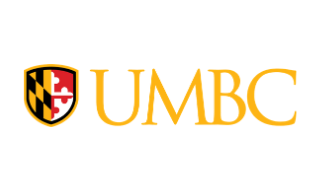
About: The University of Maryland, Baltimore County is a public research university. UMBC emphasizes science, engineering, information technology, human services and public policy at the graduate level.
Location: Baltimore County, Maryland
Industry: Higher education
LinkedIn: https://www.linkedin.com/school/university-of-maryland-baltimore-county/
“The biggest challenge is just nothing's the same.” — Corey Jennings, University of Maryland Baltimore County (UMBC).
In this new normal, Corey Jennings at the University of Maryland Baltimore County found himself in a situation where he had to rethink everything about his video strategy and how it pertained to marketing. Prior to the pandemic, Jennings’ role involved filming original pieces and interviews and disseminating them for university communications purposes. While he continued to do that, he also began working more with the events team, producing events and adding increased production quality to those pieces.
Jennings has also found himself providing guidance to others and sharing resources and documentation across the university, including faculty departments. “My role especially involves trying to give people the understanding that there's a huge difference between a live event and an online event. With an online event, you need to be more concise, so I give all of those kinds of tips on how to do it.” In doing this, Jennings wants to make sure that everybody's on a level playing field — after all, they’re all playing for the same team.
During this period, Jenning notes, “Marketing spend has moved from print pieces and slowly moved toward video. And we’re hoping in the next 12 months to really make a big shift.” This has meant seriously looking at building a sustainable infrastructure that will support future growth.
And where are the trends pointing? Jenning has noticed a growing willingness among non-professionals to work with video, both with filming and being in front of the camera. In line with this, educational audiences are also embracing lower-quality video produced by cell phones — but working with this type of footage sometimes requires extra post-production, which necessitates new storage and editing capabilities.
In addition, timelines and turnaround expectations have accelerated, making smooth collaboration and automation all the more vital for universities that want to match demand. And finally, Jennings has found that the present circumstances have granted teams much more freedom on the editing side, allowing for extra creativity in storytelling — now that’s a beautiful thing!

A Guide to Video Content Management for Higher Education
Learn how to transform your video content management system to match the demands of video-based learning and outreach.
Industry breakdown: Broadcasting
Perhaps no one knows more about the necessity to prepare for the future of video than traditional broadcasters. Demand for video content was already growing, and as social distancing continues, this trend is likely to quicken. To compete with OTT platforms, broadcasters must adapt, stay flexible, and seek new avenues for success. This means increasing and diversifying their long-term outputs.
“These times have allowed us to really step up in a lot of ways and see areas where we’ve become stagnant and areas where we didn’t even know we wanted to expand.” — Michelle Conroy, Crew Cuts.
There’s no doubt that the shift to WFH culture has revolutionized the broadcasting industry. Before the pandemic, Brian Leonard of IMG says, “I think the industry would have gone through quite a lot of pain in trying to convince people to edit from home.” However, Leonard notes that thanks to this transition, the door has flung open to welcome new possibilities, such as broadcasters expanding their editing capabilities beyond what was possible in their previous physical spaces: “In theory, where before we had 50 suites on-site, with people working from home, we could go up to 60.”
And very notably, during these times, the broadcasting industry has also seen a shift in the types of content audiences are willing to engage with. Recorded Zoom conversations and cell phone videos have become widely accepted forms of content. This trend of doing more with less has also enabled more inclusion and diversity. Thanks to Zoom, Leonard says, “We're talking to single moms who wouldn't have been able to come into the studio. We’re bringing in a more diverse clientele.”
Of course, for broadcasters looking to capitalize on all of the lucrative trends and possibilities, it’s crucial to build an infrastructure that will stand the test of time. As Sesame Street editor Memo says, “Our business is lucky that it happened in 2020, when there's enough of a remote infrastructure that we could actually make it work.”

These times have allowed us to really step up in a lot of ways and see areas where we’ve become stagnant and areas where we didn’t even know we wanted to expand.
- Michelle Conroy, Crew Cuts
Broadcasting: challenges and solutions
Here, we’ll take a more in-depth look at some of the specific challenges facing today’s remote-working broadcast industry:
Challenge: Accessing archive material remotely
For the majority of broadcast teams, editing is a creative, iterative process. As Memo Salazar explains, “What happens is someone will come up with a run-down, but then when you start assembling the show, you realize it's too long, or this doesn't quite fit, and so you have to go find another.” There’s no question then that straightforward and seamless access to archive material is a necessity. But ease of access can become a considerable hurdle when team members are scattered across physical locations with varying internet speeds, files are being inputted from multiple places, and file names are inconsistent or contain mistakes.
Solution: Deploying a MAM tool that enables easy remote access and search functions
Remember, the right MAM tool exists in the cloud, enabling team members to access the same digital archive, no matter where in the physical world they are. It really is that easy. Curator, for example, also plugs into existing editing software, eliminating the need for specialized staff training or additional admin. Just plug it in and go — the archive is now all yours for the searching!
Challenge: Generating useful metadata
As we touched upon in the last point, searchability is key when it comes to archive access. In broadcast, this is infinitely true. Time is always of the essence. As Eric Lund from Warner Media Studios says, “If I have to cut a 40-second piece for tonight, speed is of utmost need.” This calls for a quick fix!
Solution: Using a MAM that offers advanced metadata creation upon ingest
Advanced metadata creation means that all of your content is automatically logged for easy search and discovery. Speech recognition enables you to search your video files via dialogue — words, phrases, and sentences. Object and facial recognition allows you to search your archive footage for precisely the clip you need: ‘Elvis’, ‘airplane’, or girl with balloon.’ Combining emerging technologies like speech-to-text and object recognition with established methods of non-linear editing creates exciting possibilities to revolutionize best practices — perfect for innovative broadcasters.
Challenge: Coping with variable home internet speeds
Home internet speeds can really slow down a remote workflow — and for most broadcast teams, who are often working on tight deadlines, such delays are simply unacceptable. In the early days of the pandemic, as Memo Salazar puts it, “It really was all about the internet bandwidth. That just slows you down.” Kevin Maude from Social Video agrees, “Our internet bandwidth definitely became a challenge.”
Solution: Deploying a MAM with proxy-editing capabilities
We hear it all the time: slow internet speeds disrupt workflows. Fortunately, one of the most cutting-edge features of our MAM, Curator, is its proxy-editing function, which eliminates the need for massive file uploads and downloads. Most MAM’s offer this functionality. However, Curator’s frame-accurate proxies can be created automatically, and reduce file sizes by up to 98%. That means it’s possible to stream and edit those proxies on as little as 2Mbps bandwidth — more than achievable for a standard home connection, even if someone else in the house is watching Netflix.
Automated conform means that users can work on smaller, frame-accurate versions of the master file, with their edits automatically synced to the larger version. This process bypasses the issue of sluggish at-home internet — no slowing down here.
Challenge: Enabling creative review of material for broadcast
Facilitating collaboration is tough when everyone is in different places, and even the tiniest hiccups can create massive ripple effects. Of course, James Ganiere of Rio Vista Universal points out the necessity of assembling the right team and “finding an editor who is really intuitive and gets the shorthand you have.” But no one works in a vacuum, and even the best editors still require notes! So what’s the best way of enabling creative review when you’re not in the same room?
Solution: Utilizing the right MAM tool to streamline the review process
With permission-based access, team members, producers, and other stakeholders can effortlessly review in-progress or completed projects. The added agility and convenience of other features of MAM, discussed above, mean that any notes or changes can be implemented at rapid-speed. Eric Lund and Jacob Anderson’s team at Warner Media Studios discovered the value of a MAM when the pandemic hit. Lucky for them, they’d already begun laying the groundwork for streaming by proxy with IPV’s Curator, ensuring minimal disruption to their creative review processes.

We ramped up very quickly, and we were able to get essentially everyone back to work. We just said, alright — here is the new reality, let's do it!
- Jacob Anderson, Warner Media Studios
Warner Media Studios: Delivering quality and quantity, even at home

About: Warner Media is a powerful portfolio of iconic entertainment, news and sports brands including HBO, Warner Bros., Adult Swim, Bleacher Report, Boomerang, Cartoon Network, CNN, ELEAGUE, RoosterTeeth, TBS, Turner Classic Movies (TCM), TNT, truTV, Turner Sports and more.
HQ: New York, United States
Number of Employees: 30k+
Industry: Broadcasting
“We have made incremental changes to almost everybody’s workflow. We’ve made everything better and better, and we’ve discovered new things.” - Eric Lund, Warner Media Studios
When the pandemic began, Eric Lund and Jacob Anderson’s digital services production team at Warner Media Studios seized the opportunity to flex their adaptability and eagerness to go above and beyond.
For instance, they were approached about editing a Zoom-based talk show — a challenging project in and of itself, but the team needed to have it on-air in only about five days. After the production team shot it remotely on their Zoom systems, they sent it over to the team Warner Media Studios. They cut the show and did the sound design in New York, color corrected and finished it remotely in Atlanta, and then sent it to a finishing editor, who prepped it all for air and got it out under the deadline.
The team also completed digital premieres for three television shows and two movies, as well as a launch for HBO Max. The HBO Max launch included a full-day event and a 25-minute internal video, involving around 40 interviews. Fortunately, all of those interviews were transcribed in IPV’s Curator, so producers could do a paper cut to turn around this video in a lightning-fast four days. Living proof that the best technology can help you achieve even your wildest broadcast dreams!
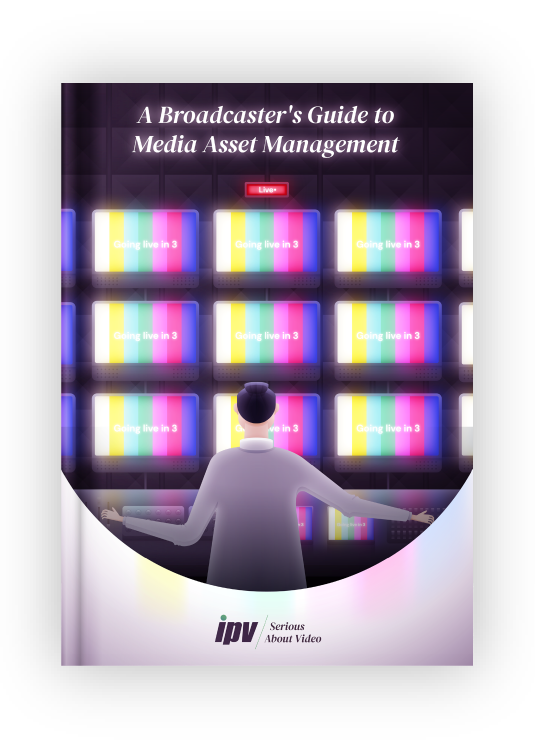
A Broadcaster's Guide to Media Asset Management
Learn how to enable the continued creation of content from home, and prepare for the future of broadcast video management.
Industry breakdown: Retail
During current times, a growing number of retailers are relying on online sales and marketing efforts to keep their businesses thriving. Video plays a vital and ever-growing role in customer engagement and retention, but it’s no easy feat to keep online audiences engaged and entertained.
Of course, there’s no question that video marketing is a worthwhile investment — nearly 90%3 of video marketers are satisfied with the ROI of their video efforts on social media. And customers are indeed asking for this content: in fact, more than half want to see more video content from brands and businesses they love.
In the retail sector, video marketers know how important it is to consider your audience, especially when competing with all kinds of entertainment on the internet and streaming/OTT platforms. However, shooting new content remains a challenge during these times, so it’s vital that retailers have the means to creatively deploy and repurpose archive footage. Meeting customers where they are, getting creative, and investing in the right tech will set retailers up for long-term video content success.
Retail: challenges and solutions
Let’s take a look at some of the challenges retailers and eCommerce brands are currently facing:
Challenge: Creatively deploying archive footage
With new footage being more difficult to shoot, retailers and their content teams have been pushed to develop and pursue creative, innovative ways to deliver engaging content that feels fresh — even when it’s not. But with teams working remotely and many creative departments unaware of what archive materials they have in their possession, this often presents a significant obstacle. So what’s the answer?
Solution: Making the archive accessible with a MAM
For organizing archives and facilitating remote working, there’s no better option than a MAM. A MAM makes it easy for remote-working teams to search, access, and edit archive footage. The video files are accessible via the cloud and editable via proxy, so there are no lengthy download or transfer processes.
The best MAM tools, like Curator, will create metadata upon ingest, meaning that the technology scans the video asset and offers descriptive, searchable tags based on speech, object, and facial recognition technologies. This eliminates much of the need for manual logging and makes it fool-proof to search for specific products, models, or pieces of dialogue. Cutting out the grunt frees up your team to focus on making engaging, creative content that resonates with audiences.
Challenge: Facilitating collaboration and creative review without the luxury of in-person communication
In industry after industry, the challenge we keep seeing is streamlining remote editing and collaboration capabilities. Time, download speeds, access — all of these issues can become resource drains on content teams and lower both productivity and morale. In the retail space, it’s especially important to keep up the positivity and creativity among team members. After all, it’s your brand on the line.
80% of teams' productivity remains as good or better
Q: How has the move to remote work impacted your team's productivity?
Solution: Adopting a MAM system that allows users to work in the same ‘virtual workspace’ no matter where in the world they are
While remote working has presented the retail industry with challenges, the right tech tools often provide an easy fix. With a MAM, you can deploy cloud-based, permission-based access, which means that your team and other stakeholders can review footage at any point in the process, from in-progress project to finished product. A MAM also ensures that files are always up-to-date, putting a definitive end to wasted time spent remedying version-control problems. Can a tech tool really help streamline your video workflow in a meaningful way? Yes, insists Adorama’s Salvatore D’Alia: “Technology has made us more productive and tighter as a team.”
Challenge: Keeping affiliates, influencers, and customers engaged
As we mentioned earlier in this section, video accounts for 80% of all internet traffic, and while that’s a promising figure, that also means there’s a whole lot of competition out there. During these incredibly lucrative times for the eCommerce world, many retail brands struggle to cut through the noise and reach their target digital audiences.
Solution: Generating meaningful content that connects
Meeting customers where they are is vital — as is motivating affiliates and influencers, who play an increasingly integral role in many brands’ digital marketing strategies. To address this challenge, generating organic and original content is key.
For instance, Salvatore D’Alia’s team at Adorama released a video showing musicians how to produce a low-budget music video at home with inexpensive lighting rigs and a single camera. Of course, a MAM can support teams in this type of content creation — automating processes and providing stakeholders with easy access to video assets can free up time and energy to focus on delivering the best, most resonant content possible.
Adorama: Sparking creativity from the couch

About: Adorama is a retailer offering new & used camera equipment & photography classes, plus electronics & computers.
HQ: New York, United States
Industry: Retail
“We’re approaching everything in a different way — a more young and upbeat way. We really want to do great things, especially with our content.” - Salvatore D’Alia, Adorama
Like many others in his position, Adorama’s Salvatore D’Alia said he had to change the way that he approached his work. And part of this shift was realizing the importance of inspiring others. In response, his social and content team made it their goal to create a fun, motivational marketing campaign. Sal explains: “If you're a creator, if you're an artist, keep doing that! It doesn't mean that if you're home, you cannot express your creativity there.” Building upon this idea, the team launched the hashtag #CreateNoMatterWhat, reaching out to influencers and pushing the idea of keeping creativity alive — even at home.
Sal shot a short commercial for the campaign using his family as actors, a Sony a7 III camera, and natural lighting. Although it wasn’t up to his usual technical standards, Sal says, “It went very well because it doesn't really matter about the quality and the aesthetic of the stuff. It's really about the heart of what you're doing, especially in that moment.” This proved correct, as the team saw an overwhelmingly positive response to the commercial. Sal says, “People were very touched and motivated by it.” Goal: achieved.
In fact, the campaign was so successful that the team decided that #CreateNoMatterWhat would continue, serving as an unofficial mission statement for the company. Sal sums it up: “If creating and being creative is what you love, that's what you should do.” We wholeheartedly agree!
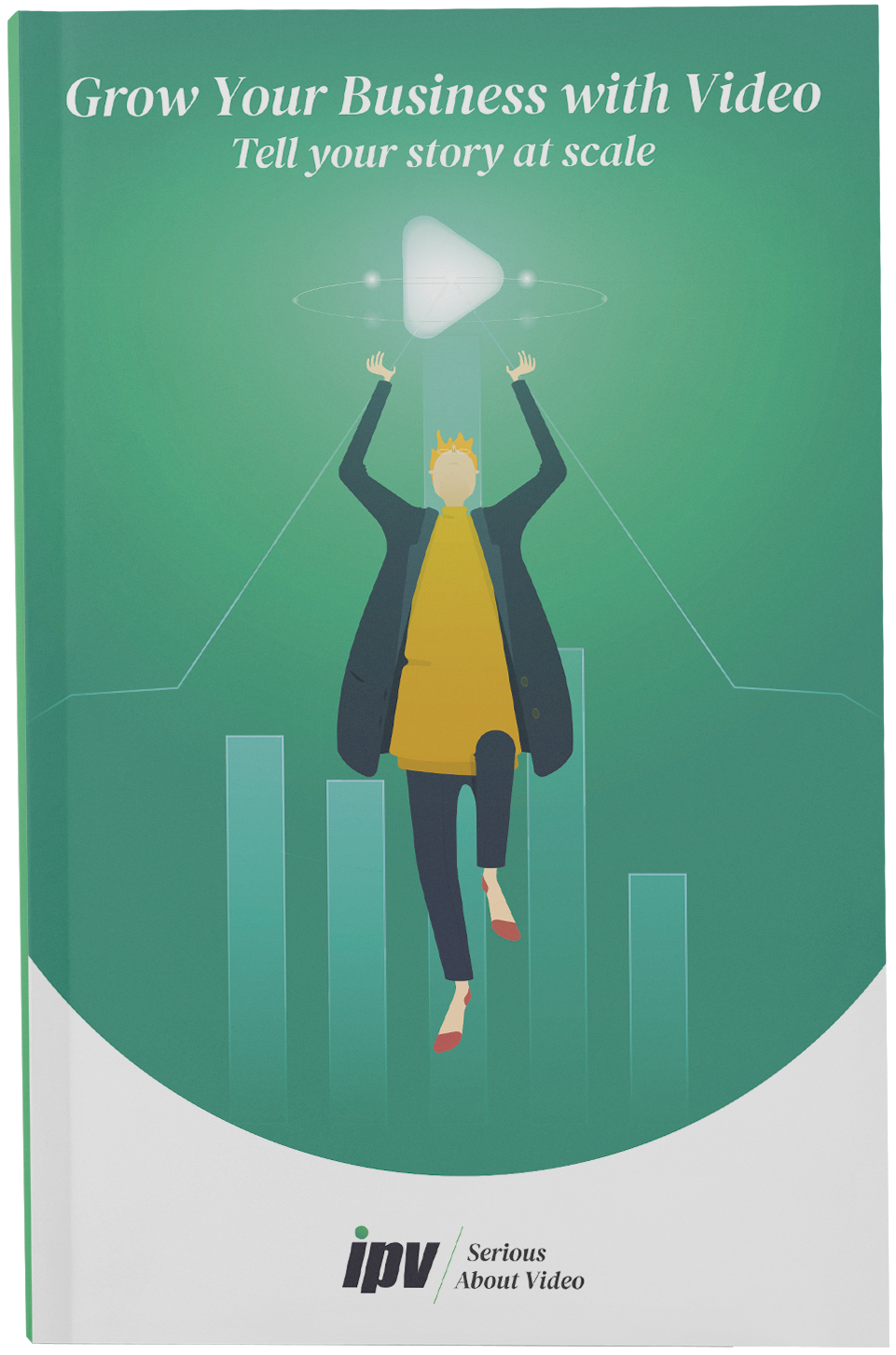
Grow Your Business with Video: Tell Your Story at Scale
Learn how video can help you get new customers, retain existing customers and bring consistency & community to your teams.
Industry breakdown: Publishing
Finally, we come to the publishing industry. With more people at home and fewer real-life entertainment options available, there’s been an increased demand for digital content, and especially video content. This shift has prompted publishers to get even more innovative in order to reach their audiences more effectively.
The rapid acceleration in the demand for video content has required the publishing industry to make creative use of social media platforms. Sometimes, that means integrating online and offline experiences. With some out-of-the-box thinking, it’s possible for publishers to encourage their audience to participate in branded experiences at home, as we’ll see later in this section. As Mariana Camacho of Food & Wine en español says, “I think you want to try to find a mix. But everything with a long reach is going to have to be virtual.”
In line with the digital shift, some previously offline events have also begun moving online for the very first time. For instance, Camacho notes that her publication’s annual festival will be reimagined in a digital format this year.
Delivering virtual, video-first experiences is crucial for publishing brands to maintain their audiences now — but it’s also the key to future-proofing and longevity. To build a video presence that will last, forward-looking publishers should deliver engaging content, streamline remote workflows, and upgrade their video storage and editing capabilities.

Sometimes editing takes a lot of loops between emails or Zoom conversations. It's much more time-consuming.
- Mariana Camacho, Food & Wine en español
Publishing: challenges and solutions
Let’s take a look at some of the challenges facing video production teams in the publishing industry today:
Challenge: Enabling remote editing and review of work
Before the pandemic, most teams had editing workflows and review processes that made sense. For Mariana Camacho’s team at Food & Wine en español, it was as easy as dropping by someone’s work station and asking them to change something. With her team working in scattered locations, this is no longer the case: “Sometimes editing takes a lot of loops between emails or Zoom conversations. It's much more time-consuming.”
Solution: Investing in a MAM that enables collaborative workflows
As remote and flexible working styles become the new norm, adopting a MAM just makes sense — this tech tool promotes seamless collaboration and review. Editors can access video assets no matter where in the world they are, and anyone with appropriate permission can review work.
Proxy-based editing streamlines this entire process — editing is performed on a smaller, low-resolution version and then transposed to the high-resolution master file. This means that any necessary changes can be made more quickly, as there’s no wasted time waiting for bulky files to transfer or upload. We dare to say that using a MAM for reviewing work is even easier than dropping by someone’s work station!
Challenge: Creating meaningful content that resonates with at-home audiences
Like many other industry leaders, publishers have been thrown into the wilds of creating meaningful, engaging content for audiences stuck at home, often without the luxury of shooting new videos. Mariana Camacho says, “We now do fewer videos and more livestreams, but in a very easy way, almost guerilla-produced way.” Keeping audiences engaged has also often meant creatively repurposing archive materials — but that’s easier said than done, especially when many video teams don’t even know what assets are available to them in the archive.
Solution: Remaining flexible and using a tech tool that organizes archive footage
A clever mix of new content and repurposed archive material is the key to making the most of what you have in these challenging times. The right MAM tool can help teams derive the maximum value from their archives. Remember, if you can’t search your material, it’s almost like it’s not there. Our MAM, Curator, plugs into existing editing software, allowing for a seamless transition.
We understand that time is often of the essence — this is why Curator emphasizes accuracy, setting loggers up for success with controlled vocabularies that prevent typos and file-naming mistakes. Advanced metadata capabilities mean that your content is also automatically logged using speech and object recognition technologies. Users can search the archives for snippets of dialogue, specific actors or brand logos, and much more. In short, a MAM makes your archive searchable — and, in doing so, makes it infinitely more valuable.
Challenge: Producing professional content without professional equipment
Of course, archive footage isn’t the only way forward — many video teams are still managing to make completely new content. “I think tools like Zoom are going to become more common in productions. Maybe it's not visually super attractive, but sometimes it's what you've got to do.”
Fortunately, audiences have been rather forgiving in these times — but while they’re overlooking technical quality, they’re definitely placing more value on the quality of the content itself. Luckily, high-quality content is the publishing industry’s forte! Still, there’s only so much you want to ask audiences to forgive — and this makes post-production all the more important. As Camacho puts it, “A challenge in the future is to make things more eye-catching and attractive, especially in our case also because food is a lifestyle. You have to feel it to get it.”
Solution: Placing more emphasis on post-production — and building out the infrastructure to make this possible
This is where MAM comes in — for editors to work their magic, they must be able to access and search footage. As we’ve explored already, a MAM tool generates useful metadata upon asset ingest, offers easy remote access via the cloud, eliminates issues surrounding internet download speeds, and promotes creative review and collaboration processes. Plugging into existing software means that your team benefits from these functions without missing a beat. High-quality and highly original video content? Coming right up!
Food & Wine en español: Adding new flavor to digital content

About: Food & Wine is an insider’s guide to food and drink industry news that celebrates smart leadership, good business practices, and the enduring values of mentorship.
HQ: Birmingham, United States
Industry: Publishing
“We are focusing on doing virtual experiences and looking at formats to do that in video.” - Mariana Camacho, Food & Wine en español
At Food & Wine en español, Mariana Camacho’s content team took an imaginative approach to audience engagement and set up two live-streamed series. For the first series, which was broadcast on Instagram, they asked chefs in various parts of Mexico to film themselves cooking at home with their phones. At a time when most of the audience was unable to leave their neighborhood, this offered a light-hearted opportunity to digitally ‘travel’ around Mexico, visiting different kitchens and learning about various cuisines.
The second series was filmed on-site in a kitchen studio for Facebook and YouTube. This series was pitched as a cooking school, produced with more cameras, and contained interaction between the chef and the show host. This series was such a success that the team is now turning it into a hybrid cooking school ‘experience.’ Viewers can sign up to receive a box with all the necessary supplies and ingredients to follow along with future videos at home. Digital content and a real-life dinner? Now that’s what we call audience engagement!
How to future-proof your video production
In these uncertain times, there’s a lot we don’t know. But here’s what we do: the demand for video content isn’t going anywhere. Supporting your video production team with the right tech tools helps you collaborate more efficiently, utilize your resources more effectively, and derive the most value from your video assets. At the end of the day, it’s all about delivering high-quality, engaging content to your target audience — and no one understands this better than we do.
Working remotely on video production presents endless challenges. But as you might have worked out, the vast majority of these obstacles can be overcome with one easy-to-use tool. A MAM solution can improve and future-proof your video creation, storage, and remote workflows. A MAM allows you to repurpose archive footage, streamline collaboration, and enable effortless review of in-progress and completed projects. Automating these time-consuming processes frees up your team to focus on what really matters — delivering brilliant video content.
A checklist: do I need a MAM?
From one-man-bands to gigantic teams, many video production departments already benefit from our cloud-based, scalable MAM system. Our lightest customers use Curator to manage around 1,500 video assets while our heaviest customers ingest more than 10,000 hours of 4k video each and every week.
Still not sure if a MAM is the right choice for your team? No problem! Try our handy checklist:
Does your team need easy access to cloud-based files?
Do you want to improve collaboration and workflow processes and ease your team’s administrative burden?
Do you struggle with video file download and upload speeds?
Do you want an easier way to organize, access, and utilize your archive material?
Do you have data security concerns, requiring permission-based access to a unified production and archive environment?
Would your team benefit from the oversight and peace-of-mind of edit traceability and ‘undo’ functions?
Do you require direct integration with the editing software your team currently uses, such as Adobe Premiere Pro?
Partnering with video teams to build a brighter future
If you answered yes to any of the above questions, your team will benefit from a MAM. Of course, it’s important to remember that not all MAMs are created equal, especially when it comes to video production. While we are certainly not the only MAM provider on the market, we are completely confident in our ability to help video production teams across various industries deliver collaborative remote workflows at lightning speed.
To meet the specific needs of video production teams, we’ve developed a quick-deploy version of our MAM software. Curator is an all-in-one, cutting-edge cloud video editing suite that can move your operation into the cloud in as little as 36 hours. Curator supports editing software such as Adobe Premiere Pro, which means your projects can continue remotely, and your teams can carry on with their creative work with minimal training and interruption.

Of course, technology is only one piece of a much larger puzzle. After all, there’s absolutely no substitute for the right talent, instincts, and ideas. We’ll leave those things up to you! Meanwhile, we’re here, ready to support and streamline your workflows with a software solution that truly allows your creativity to shine.
The future of video is bright — here’s to helping you make it even brighter!
Ready to take a closer look at Curator?Book your time with Gabrielle when it suits you
Resources

Curator Clip Link
Stop searching and start finding with Curator Clip Link's AI-enabled faceted search. Access frame-accurate 2% proxy streams of all your creative assets from anywhere in the world.

Curator for Adobe
Gone are the days of disorganised folder systems and hours spent on admin. Check out this quick video demo to see how you can spend more time creating with Curator.

Curator Connect
Supporting all major camera cards and video formats, Curator Connect enables media managers to ingest and tag video anywhere in the world through a simple user interface.

A Creative Agency’s Guide to Video Content Management
Learn how to get ready for video content creation at scale, and how to accommodate work-from-home operations.

The Future of Video for Creative Agencies: By the World’s Largest Creative Agencies
Learn how the leading agencies confronted lockdown, retained clients and continued to deliver video content campaigns from home.
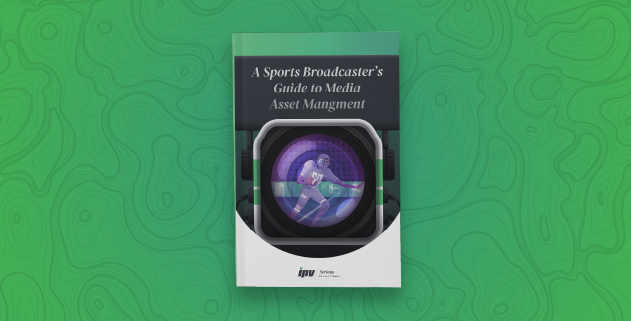
A Sports Broadcaster's Guide to Media Asset Management
Learn how to effectively access and re-use archive material to continue to deliver on-demand content for sports fans.
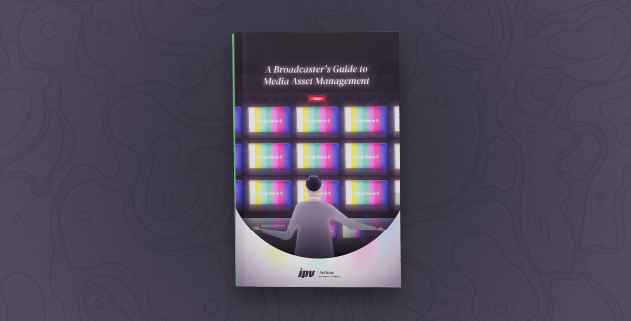
A Broadcaster's Guide to Media Asset Management
Learn how to enable the continued creation of content from home, and prepare for the future of broadcast video management.
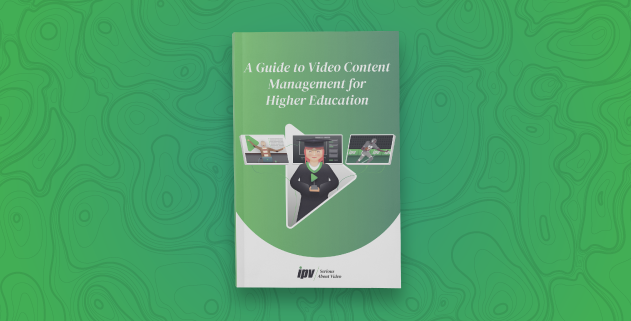
A Guide to Video Content Management for Higher Education
Learn how to transform your video content management system to match the demands of video-based learning and outreach.
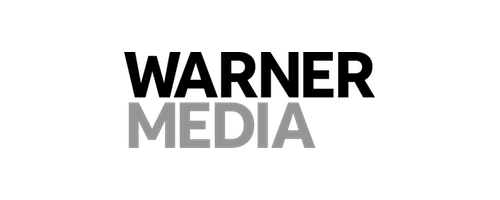
How WarnerMedia became one of the world's largest remote video production teams
Jacob and Eric discuss pre-COVID-19 workflows, how their video teams are adapting to lockdown, the technical challenges they faced and the impact on the industry in the longer term.
References
https://www.cellainc.com/insights/webinars/2020/01/20/in-house-creative-industry-report-insights-and-highlights/
https://www.wordstream.com/blog/ws/2017/03/08/video-marketing-statistics
https://blog.hubspot.com/marketing/state-of-video-marketing-new-data
Additional references
Cella: 2020 In-House Creative Industry Report
Cella: COVID-19 Impact on Creative, Marketing and Digital Teams, May, 19, 2020
